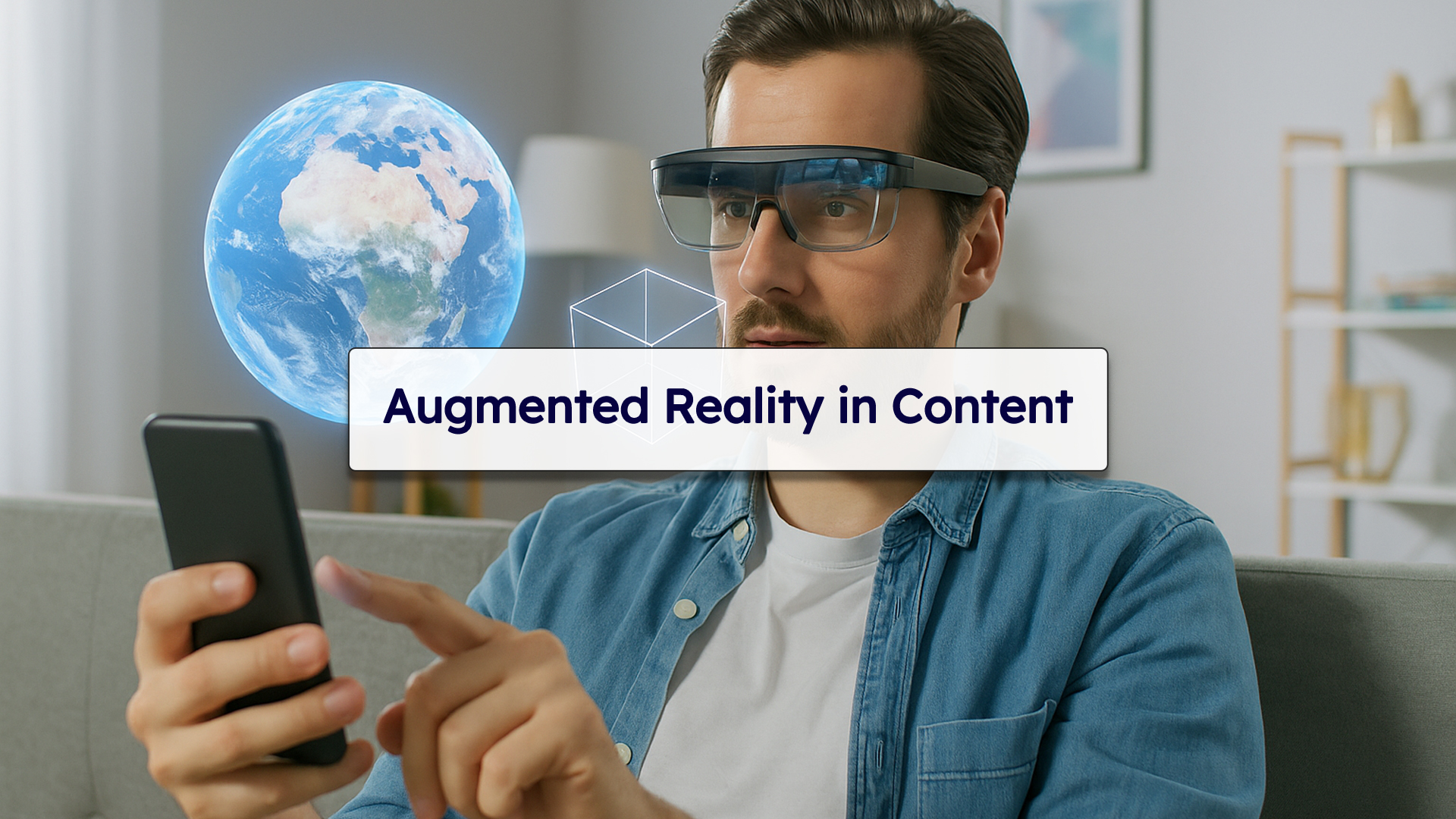In a world where attention is the ultimate currency, content creators and brands are constantly on the hunt for ways to captivate their audiences. Enter Augmented Reality (AR)—a powerful tool that blends digital content with the physical world, creating immersive and interactive experiences that are reshaping how we consume, engage with, and create content.
What is AR in Content?
Augmented Reality enhances real-world environments with computer-generated perceptual information—visual, auditory, or haptic—layered onto what we see through smartphones, AR glasses, or tablets. Unlike Virtual Reality, which creates an entirely artificial environment, AR integrates digital elements into our real-life surroundings.
In the context of content, AR is not just a visual gimmick; it’s a medium. From education and marketing to social media and entertainment, AR transforms static content into engaging, interactive experiences.
How AR is Revolutionizing Content Creation
1. Enhanced Storytelling
AR allows creators to embed stories within the physical environment, making narratives more immersive. Imagine reading a children’s book where characters leap off the page or a historical blog where monuments appear in your living room. AR breathes life into storytelling in ways traditional media never could.
2. Interactive Marketing Campaigns
Brands are leveraging AR to turn passive advertisements into two-way experiences. With AR filters on platforms like Instagram and Snapchat, users become part of the campaign, trying on products virtually or interacting with branded experiences. IKEA’s AR app lets you see how furniture fits in your space—content that’s useful, personalized, and memorable.
3. Educational Content with Real-World Context
AR transforms learning materials into 3D, interactive models. Medical students can explore human anatomy, history enthusiasts can walk through ancient civilizations, and science learners can visualize complex concepts—all in their immediate surroundings. AR in content makes learning more intuitive and experiential.
4. Bridging Online and Offline Experiences
With AR, physical content can become a gateway to digital interaction. A magazine cover can launch a video message. A poster can display 3D product previews. These hybrid experiences redefine how we think about traditional media and provide fresh avenues for creative expression.
Challenges and Considerations
While AR is a game-changer, it’s not without challenges. Accessibility and device compatibility can limit reach. Creating quality AR content requires technical expertise and resources. And there’s a fine line between engaging interaction and overwhelming users with unnecessary effects.
Privacy is another key concern, especially when AR involves real-world data and environments. Content creators must be mindful of ethical implications and user consent when integrating AR into everyday life.
The Future of AR in Content
The rise of AR-capable devices, 5G connectivity, and platforms that simplify AR development (like Spark AR and Adobe Aero) point to a future where AR becomes a mainstream element of content strategy. As technology becomes more accessible, the barrier between content creator and AR developer will continue to shrink.
Whether you’re a marketer, educator, or storyteller, AR offers a powerful new palette to paint your vision. The question isn’t whether AR will become a standard tool in content—it’s how creatively we’ll use it.


